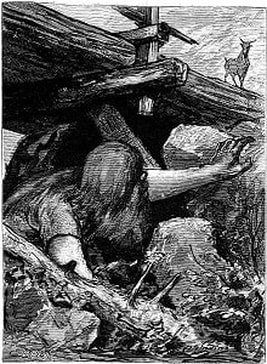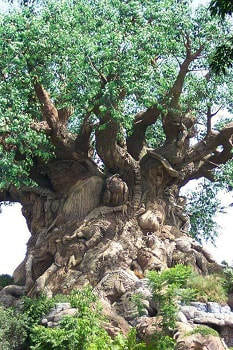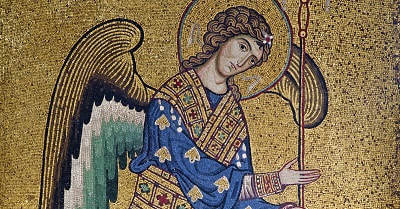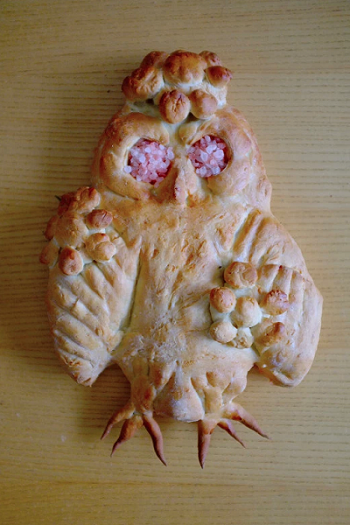David Tickner's Blog, page 29
September 4, 2021
Labour Day
 Labour
LabourDo the words labour and work mean the same thing? Or something different? Generally speaking, work is ‘what’ gets done and labour is ‘how’ work gets done.
Labour has its origins in Latin labor (toil, exertion; hardship, pain, fatigue; a work, a product of labor). Before that, the origin of the word is uncertain. The word labour comes to English around 1300 meaning a task or project, and later meaning exertions of the body; trouble, difficulty, hardship. In brief, labour means the physical and mental energy required to do a task.
Labour, as the physical exertions of childbirth, is from the 1590s. Labour, meaning a body of labourers considered as a class, is from 1839.
The verb ‘to labour’, from the late 14th century, meant to perform manual or physical work; work hard; keep busy; take pains, strive, endeavor; also, to copulate! (It’s a tough job but someone has to do it). The verb ‘to labour’ comes from Old French laborer and Latin laborare (to work, endeavor, talk pains, exert oneself; produce by toil; suffer, be afflicted; be in distress or difficulty).
Labourer (manual worker, often unskilled) is from the mid-14th century. Laborer meaning a member of the working class, the lowest social rank, is from around 1400.
Day
In Old English daeg meant the period during which the sun was above the horizon. Only later did a day mean a 24-hour period. Old English daeg is one of many words meaning day that come from Proto-Germanic dages (day); for example, Old Saxon, Middle Dutch, Dutch dag, Old Frisian dei, Old High German tag, German Tag, and Old Norse dagr. These words have their origin in one or both of two Proto-Indo-European roots—agh (a day) and dhegh (to burn).
Labour Day
Labor Day was first marked in 1882 in New York City. Labour Day was recognized as a statutory holiday in Canada in 1894.
Enjoy the long weekend!
Reference: Online Etymological Dictionary, https://www.etymonline.com/
Published on September 04, 2021 11:29
September 2, 2021
Troll
 Troll is an Old Norse word from Scandinavian mythology and folklore referring to a malevolent giant supernatural being not of the human race, an evil spirit, or a monster—an ungainly creature that walks clumsily. However, by the 19th century, such trolls seemed to have shrunk—in Sweden and Denmark they were regarded as dwarfs or imps (small or baby devils) who lived in caves or underground. Trolls had become more mischievous than malevolent.
Troll is an Old Norse word from Scandinavian mythology and folklore referring to a malevolent giant supernatural being not of the human race, an evil spirit, or a monster—an ungainly creature that walks clumsily. However, by the 19th century, such trolls seemed to have shrunk—in Sweden and Denmark they were regarded as dwarfs or imps (small or baby devils) who lived in caves or underground. Trolls had become more mischievous than malevolent.A related Swedish word trolla means to charm or to bewitch; a related Norse word is trolldomr (witchcraft).
The verb ‘to troll’, from Proto-Germanic truzlanan, Old High German trollen (to walk about with short steps) and Old French troller (to wander without purpose), came to English in the late 14th century meaning ‘to go about, to stroll’. Later, in the early 15th century, ‘to troll’ meant ‘to roll from side to side, to trundle’ (trolley is a related word). In the 1560s, ‘to troll’ meant to lure with a moving bait, to entice, or to allure (similar to the verb ‘to trawl’ used in relation to fishing). ‘To troll’, meaning to cruise in search of homosexual encounters, is first recorded in 1967.
The internet sense of ‘troll’ is from the late 1980s and early 1990s. There are several theories of when and why this sense of troll and trolling first appeared. However, the sense of an internet troll as a mischievous and/or malevolent person is a recurring theme. Whether an internet troll is a giant or a dwarf is not so much related to its size as it is to the influence of the troll on shaping or disturbing the perspective of the listener or reader.
https://en.wikipedia.org/wiki/Internet_troll
Reference: Online Etymological Dictionary, https://www.etymonline.com/
Published on September 02, 2021 21:08
August 30, 2021
Like water
 Covid finds a path
Covid finds a pathlike water runs down a hill
of least resistance
Image: https://www.cdc.gov/media/subtopic/images.htm
Published on August 30, 2021 10:59
August 27, 2021
Tree
 The word tree has its origins in Proto-Indo-European (PIE) drew-o (tree), from the PIE root deru (to be firm, solid, steadfast). PIE deru is also the source of the words true and truth.
The word tree has its origins in Proto-Indo-European (PIE) drew-o (tree), from the PIE root deru (to be firm, solid, steadfast). PIE deru is also the source of the words true and truth.From these PIE beginnings come Proto-Germanic trewam (the source of Old Frisian tre, Old Saxon trio, Old Norse tre) and Old English treo, treow (tree, particularly the oak tree; also, timber, wood, beam, log, stake).
Old English treo is the root of Old English treowwyrhta (tree-wright), a word replaced during the evolution of English for some reason by Latin carpentarius (cartwright) rather than by what would seem to be the more logical Latin word--lignarius (carpenter; i.e., lignum is Latin for wood).
The Old English words triewe (faithful, trustworthy, honest, steadfast) and triewo (faith, faithfulness, fidelity, loyalty, veracity), also from PIE deru and from Proto-Germanic treuwaz (having or characterized by good faith), are the origins of the words true and truth.
Given these common origins of tree and truth, consider the tree as a metaphor for truth. A tree, firmly rooted in the soil, begins as a seed or sapling and over time continues to grow and branch out. A tree, nourished by the soil and air and light in which it grows, nourishes and sustains the other trees around it, and when it dies it returns to the soil.
Reference: Online Etymological Dictionary, https://www.etymonline.com/
Published on August 27, 2021 11:10
August 10, 2021
Angel
 Do you ever have a hunch or intuition or gut feeling about something? I sometimes wonder what ancient people would have thought when they experienced such sensations, such knowings. Perhaps these experiences felt like voices from outside themselves, like messengers from another realm. Perhaps imagining angels was a way to give form to such voices.
Do you ever have a hunch or intuition or gut feeling about something? I sometimes wonder what ancient people would have thought when they experienced such sensations, such knowings. Perhaps these experiences felt like voices from outside themselves, like messengers from another realm. Perhaps imagining angels was a way to give form to such voices.Angels are part of most world religions, including Christianity, Hinduism, Islam, and Judaism. Angels are not ghosts or spirits or apparitions. They are found in both religious and secular contexts. They are ubiquitous.
The word angel comes to English in the 14th century from the Old English engel and the Old French angele. Both words come from Latin angelus and Greek angelos (messenger, envoy, one that announces) and possibly from Greek angaros (mounted courier).
Before this, the origins of the word angel are uncertain. Some suggest a possible relation to Sanskrit aijira (swift) or Hebrew malakh (messenger, to send). Another Old English word for angel was the delightful word aerendgast (errand-spirit).
Are male or female or both or neither? There is considerable discussion on this point. Some suggest that angels in early Christianity and Judaism were male (with few exceptions). In Christian art angels tend to be androgynous although in modern times they are most often seen as female. Artists seem to struggle with representing a being that is neither male nor female (or that is both). Some suggest that even though angels have been described as male, the term ‘male’ has been used for both male and female in the same way that the term ‘man’ or ‘mankind’ was used in the past to refer to all people. In some literary accounts, including the Bible, angels are at first or even second glance indistinguishable from human beings.
Other discussion revolves around whether or not angels have wings. Some suggest that the image of wings for angels comes to Christianity from non-Christian cultures.
Angels have been categorized into various systems and hierarchies. For example, in the 13th century, St Thomas Aquinas determined that there were nine levels of angels organized into three hierarchies. Each of the three hierarchies contains thee orders or choirs of angels.1
In any case, whether we are talking of the gender or the wings or the hierarchy of angels, or of whether or not they exist outside of our imaginations, the discussion continues.
In my own experience, I was surprised to see a 1,500 year-old carving of angels in the wall behind a sleeping Vishnu in a cave on India’s Coromandel Coast. I have seen angels portrayed in Islamic art. My grandmother swore that during World War One she awoke one night to see an angel standing at the foot of her bed who told her that my grandfather, who had just been wounded in battle at Vimy Ridge, would be all right.
Image: Mosaic of the Archangel Michael (13th century) from Church of Santa Maria dell' Ammiraglio, Palermo, Italy (Photo: Stock Photos from Renata Sedmakova/Shutterstock)
Reference: Online Etymological Dictionary, https://www.etymonline.com/
https://mymodernmet.com/angel-art-history/
1 The etymology of hierarchy, in brief, is in ancient words related to ‘rule by the gods’ or to the orderly arrangement of sacred objects. Educators will be familiar with Bloom’s Taxonomy in which he outlines the ‘hierarchies’ of learning in three different domains.
In Aquinas’ system for the organizing of angels, the three hierarchies and their related orders are as follows:
The ‘heavenly counsellors’ hierarchy, closest to the divine, comprises three orders: seraphim, cherubim, and thrones.
The second hierarchy, the ‘heavenly governors’, also comprises three orders: dominions (or lordships), virtues (or strongholds), and powers (or authorities).
At the lowest level, closest to humans, the ‘heavenly messengers’ hierarchy again comprises three orders: principalities (or rulers), archangels, and, finally, at the low end of this hierarchy, angels. That is, within this organization of three hierarchies and nine orders, angels are lowest of the nine orders and the closest of the orders to people. Archangels, second lowest, are sort of like the foreman/woman or shop steward of angels.
Ref: Christian angelogy. Wikipedia, https:://en.m.wikipedia.org
Published on August 10, 2021 10:14
August 5, 2021
Filibuster
 We hear the term filibuster used from time to time in news items related to politicians trying to block their opponents from passing legislation with which they don’t agree.
We hear the term filibuster used from time to time in news items related to politicians trying to block their opponents from passing legislation with which they don’t agree.I was surprised to learn that until relatively recently the word filibuster referred to a pirate or a freebooter. Filibustering was plundering and stealing.
Where does this word come from? In brief, the word filibuster is related to the word freebooter which has its origins in Proto-Indo-European and Proto-Germanic words being ‘to love booty’! The word freebooter came to English in the 1560s from Dutch vrijbuiter (plunderer, robber).
Dutch vrijbuiter is the source of Spanish flibustero and French flibustier. From these sources, the English word flibutor (pirate; later, a West Indian buccaneer of the 17th century) appears in the 1580s. A flibutor was another name for a pirate (a word which came to English around 1300) or buccaneer (a word which came to English in the 1680s).
By 1851, the word filibuster appears in American English in reference to lawless military adventurers from the US who tried to overthrow Central American governments (e.g., expeditions against Cuba (1850 – 51), the Mexican state of Sonora (1853 – 54), and Nicaragua (1855 – 58). At that time, filibustering was defined as “the right and practice of private war, or the claim of individuals to engage in foreign hostilities aside from, and even in opposition to the government with which they are in political membership” Harper's New Monthly Magazine, January 1853” (Online Etymological Dictionary).
Filibustering, now used in US politics to refer to obstructionist legislators who ‘pirate’ a debate or overthrow the usual order of authority, is from the 1860s.
Could we say that today political filibustering is stealing time? Or perhaps, when a sports team ‘runs out the clock’ at the end of a game so that their opponent does not get a last chance to score, are they filibustering?!
Reference: Online Etymological Dictionary, https://www.etymonline.com/
Published on August 05, 2021 21:56
August 2, 2021
Savage
 The word savage has its origins in Latin silva (wood, woodland, forest, grove, orchard) and silvaticus (of the woods, wild).1 Old French sauvage (wild, untamed, strange) is from these Latin sources.
The word savage has its origins in Latin silva (wood, woodland, forest, grove, orchard) and silvaticus (of the woods, wild).1 Old French sauvage (wild, untamed, strange) is from these Latin sources.The adjective savage (fierce, ferocious), from Old French sauvage, came to English in the mid-13th century; by the early 14th century savage mean animals or places that were wild, undomesticated, or untamed. By the early 15th century, the noun savage referred to a ‘wild person’ or to a person who lived in the wild.
The verb ‘to savage’ (to act wildly) is from the 1560s. To savage, meaning to tear with the teeth or to maul, is first seen in English in the 1880s.
The word savage, like the words heathen and pagan, originally referred to the places where people lived rather than to the people themselves. Unfortunately, such words have often been used rudely or disparagingly to describe the people; in particular, ‘other’ people who are not like ‘us’.
1 The adjective sylvan (of the woods) came to English in the 1570s from French sylvain and Latin silvanus (pertaining to wood or forest) and silvanae (goddesses of the woods), all from Latin silva.
The word silviculture refers to the art and science of managing, sustaining, and caring for the forests.
Reference: Online Etymological Dictionary, https://www.etymonline.com/
Published on August 02, 2021 11:17
August 1, 2021
Lammas Day
 Why do we have a holiday at the beginning of August? When I was growing up in Saskatchewan I used to wonder why this holiday was called the ‘August Bank Holiday’. What did this holiday have to do with banks and banking? Today, here in British Columbia, the holiday at the beginning of August is simply called ‘BC Day’.
Why do we have a holiday at the beginning of August? When I was growing up in Saskatchewan I used to wonder why this holiday was called the ‘August Bank Holiday’. What did this holiday have to do with banks and banking? Today, here in British Columbia, the holiday at the beginning of August is simply called ‘BC Day’.But where does this holiday come from?
It has its origins in ancient harvest festivals, notably the Lammas Day festival of Anglo-Saxon England (5th to 11th centuries CE). Lammas Day celebrated the first bread made from the wheat harvested each summer season, usually around the beginning of August.
The word Lammas comes from Old English hlafmaesse (loaf mass); that is, the mass or worship service at which these first loaves were brought to the local church and blessed in thanksgiving. Later this bread was broken into four parts and placed in the four corners of a granary as a protection for the garnered grain.
Lammas Day, like other Christian festivals, comes from a much earlier pre-Christian English harvest festival, the Gule of August, a similar dedication of the first fruits of the harvest. And, in Shakespeare’s Romeo and Juliet, we learn that Juliet’s birthday was Lammas Eve.
Anyway, enjoy the BC Day (or Lammas Day) long weekend!
Image: Lammas loaf owl with salt eyes (Wikipedia)
Reference: Online Etymological Dictionary, https://www.etymonline.com/
https://en.wikipedia.org/wiki/Lammas
Published on August 01, 2021 12:11
July 28, 2021
Bewildered
 We often hear news stories of people who go for a day hike in the local mountains and end up lost and in need of rescue. Do you know people who have had such an experience? Have you had an experience of being lost or disoriented? What does such an experience feel like?
We often hear news stories of people who go for a day hike in the local mountains and end up lost and in need of rescue. Do you know people who have had such an experience? Have you had an experience of being lost or disoriented? What does such an experience feel like?What is the word for such an experience? Consider bewildered—a word which evolved over the years as the name of this feeling of being lost or disoriented.
Not surprisingly, the word ‘wild’ is the root of bewildered. The adjective wild has its origins in the Proto-Indo-European (PIE) root welt (woodlands, wild), Proto-Germanic wildia (wild), and Old English wilde (in the natural state, uncultivated, untamed, undomesticated, uncontrolled).
Old English wild-deor (wild animal, notably deer) is the origin of the early 13th century word wilderness (a wild, uninhabited, uncultivated place). Also, in the early 13th century, the noun wild appears (i.e., the ‘wildlife’—the creatures in the wild). In brief, the ‘wild’ live in the ‘wilderness’. However, by the 1590s, the noun wild simply referred to an uncultivated or desolate region rather than to the wildlife living there.
In its origins, to be bewildered meant that something had been done to you. That is, if you had been ‘bewildered’, you had been thoroughly led astray or lured into the woods; i.e., be- (thoroughly) + wilder (an archaic word meaning ‘to lead astray’).1 (I am reminded of the Hansel and Gretel story: two children abandoned in the forest by their parents. Note to self: avoid using breadcrumbs to mark the trail when hiking).
Not until the 1680s had the verb ‘to bewilder’ come to mean ‘to confuse as to direction or situation’ (“Which way to turn?”; “What’s going on here?”) or ‘to puzzle, perplex, or confuse’. The adjective ‘bewildered’, also from the 1680s, describes this experience. The noun bewilderment is from 1789.
What bewilders you today? The range of gluten-free or dairy-free products in the organics aisles of a supermarket? Someone’s strange behavior? Walking for the first time in an unfamiliar city? The daily news? What wilderness do you get lost in?! What do you do to get your bearings and re-orient yourself?
If, like me, you now have the old song “Bewitched, bothered, and bewildered” ear-worming its way into your consciousness, you may be interested to know that the word bother (from 1718) was originally a synonym for bewilder. Bewitch? That’s another story.
1 Similarly, the verb ‘to believe’ means ‘to thoroughly love’; i.e., from be- (thoroughly) + German Liebe (love) and originally from PIE leubh (love, care, desire). In its origins, a belief was something in your heart, not in your head.
Reference: Online Etymological Dictionary, https://www.etymonline.com/
Published on July 28, 2021 10:38
July 25, 2021
Coagmenta Punicana: Phoenician Joint
 So many things in addition to words have come to us almost unchanged through the centuries. How about a technique known to the ancient Romans as coagmenta punicana. That is, Latin coagmenta, a joint, from coagulare—to clot or to congeal or coagulate; and, punicana, the Latin name for the Phoenicians of the eastern Mediterranean. In brief, a joint from Phoenicia.
So many things in addition to words have come to us almost unchanged through the centuries. How about a technique known to the ancient Romans as coagmenta punicana. That is, Latin coagmenta, a joint, from coagulare—to clot or to congeal or coagulate; and, punicana, the Latin name for the Phoenicians of the eastern Mediterranean. In brief, a joint from Phoenicia. And I’m not talking of those funny cigarettes with which some of us may be familiar.
The Phoenician joint is a locked mortise and tenon wood joinery technique used in shipbuilding to fasten the wooden planks of the hull. The earliest example of such a joint is from a Phoenician trading vessel that sunk off the coast of Marseille in the 6th century BCE. The Phoenician joint is still used today in shipbuilding and carpentry.
The Phoenician joint is a variation on a Neolithic technique which is at least 7,000 years old and which has been found in archaeological sites of the Middle East, Europe, and Asia. The stones of Stonehenge were fashioned and joined in this way.
Image: By Eric Gaba, based upon a drawing from references provided in the original citation, 1999. https://commons.wikimedia.org/w/index...
Reference: Online Etymological Dictionary, https://www.etymonline.com/
https://en.wikipedia.org/wiki/Phoenician_joints
Published on July 25, 2021 13:25



